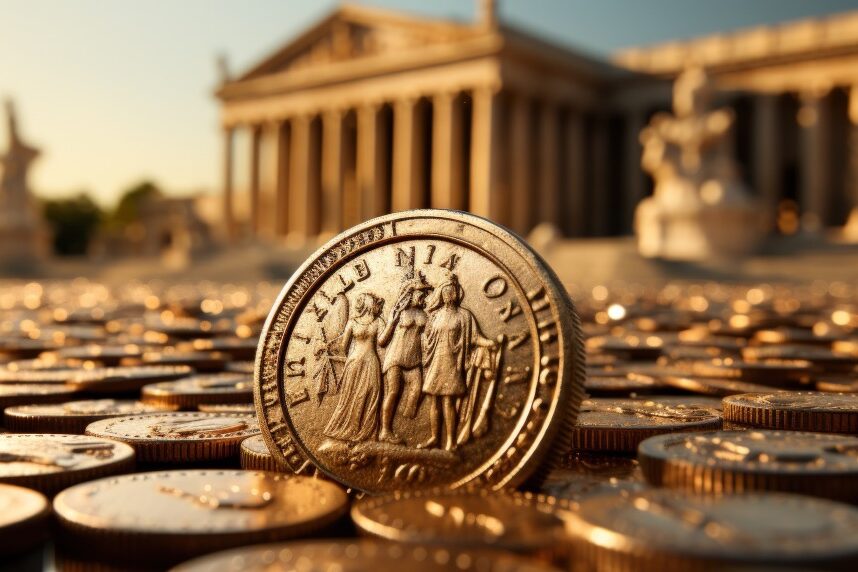Father John Itzaina, pastor of Saints Peter and Paul Church, was the first of many to correctly respond that the statue in the center of Washington Square Park is not that of George Washington, but Benjamin Franklin.
Father John lives across the street from the park, so it’s not surprising that he got the answer right. What he didn’t get right was the location of the statue prior to its move to Washington Square Park. Don’t worry Father John, nobody else got that part of the answer right either.
The Franklin Statue in Washington Square Park
The statue of Benjamin Franklin is one of the earliest extant public monuments in San Francisco. It was donated to the City in 1879 by a dentist by the name of Henry Daniel Cogswell, who made his fortune in the gold rush. Back then, if you wanted a gold filling, you had to bring your own gold—some for your filling and some for the dentist.
Cogswell invested his money wisely, and became one of San Francisco’s first millionaires. Cogswell was what was then referred to as a “teetotaler.” He firmly believed that people should abstain from any type of alcoholic beverages. He loved to design public monuments (most of which lacked any aesthetic value) extolling his point of view on the subject.
One of the first monuments was the Franklin monument. While the bronze of Benjamin Franklin was typical, the granite pedistal on which it was placed was odd at best. There were, at the bottom of the pedistal, spigots where one could obtain water. They were named for famous mineral water springs, but were in reality simply connected to the City’s water supply. Cogswell believed that if people had access to clean drinking water, they would opt for that rather than for alcohol.
This was a bit of a crazy philosophy even for the average ninetheenth-century person, but Cogswell believed it anyway. He erected less-than-artistic public monuments everywhere—all with water spigots for those wishing to switch from booze to water. So firm was he in his resolve, he vowed to build one public drinking fountain for every one hundred bars in America. Not surprisingly, the idea didn’t catch on. As a matter of fact, many towns simply tore down Cogswell’s drinking fountain monuments, and then went to the nearest bar to celebrate with a beer.
When the Franklin monument was originally dedicated in 1879, Cogswell installed a time capsule marked, “Mementos for the Historical Society in 1979.” When the time capsule was opened one hundred years later, what was found was mostly Cogswell’s personal mementos.
As for the original location of the monument, here we find a lesson about the scholarly worth of the prestigious Internet. In a world where Wikipedia promotes fact by concensus, and libraries are eschewed in favor of the faster Google search, it’s not uncommon for one piece of misinformation to promulgate throughout cyberspace faster than an STD during fleet week.
Lotta Fountain, Kearny and Market, 1880
This is clearly the case with regard to the original location of the Franklin monument. Somewhere, someone mistakenly said that the original location was at Kearny and Market, and since then, everybody has copied this erroneous statement.
In fact, the Franklin Monument was at the southwest corner of Kearny and Columbus, right in front of where the Columbus Tower stands today. The sole remaining photographic proof of this assertion is shown below. In this photograph taken by the Dean of North Beach Photographers, J. B. Monaco, the monument can be seen on the far left side. Monaco identified this photograph as “looking south on Kearny from Columbus.”
As for the statue at the corner of Kearny and Market Street, that was—and still is—the Lotta Fountain. It was originally on the northwest corner of that intersection, but was moved to the northeast corner, and then moved a few feet east again during subsequent road construction. In the 1880 photograph shown above, the Lotta Fountain is clearly visible, but the Cogswell’s Franklin Monument is not. Q.E.D.
This week’s mystery photograph
Just around the corner from Kearny, on the east side of Columbus Avenue is another building that figures prominently in the Italian history of North Beach. Today, two businesses—a spa and a dress store—occupy this location, but in its day, this was the center of power for the Italian Colony. It is where the most powerful man in the community operated the most influential business. Can you name the man, the business, and the address?
If you think you know, send an e-mail to Nickolas@ ItaloAmericano.com and you may be selected to win a prize to be revealed in next week’s issue of L’Italo-Americano.
Nickolas Marinelli serves as the Director of Community Relations at the Italian Cemetery in Colma. Nickolas can be contacted by e-mail at: Nickolas@ItaloAmericano.com




























